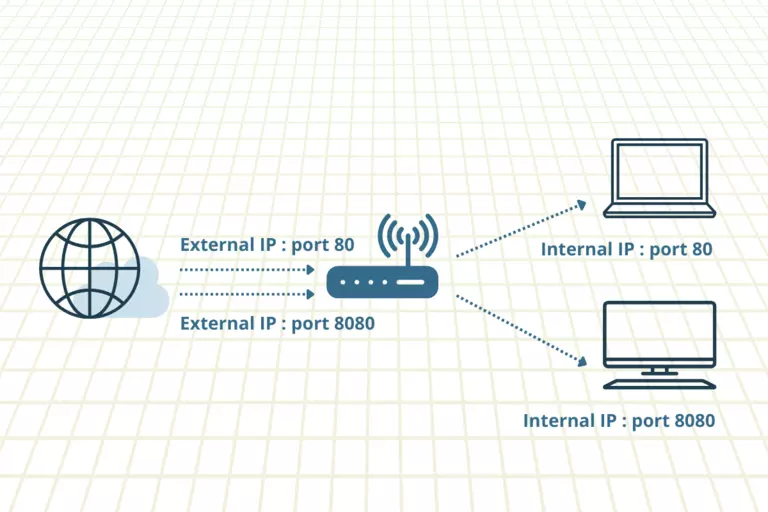When you forward a port you are making a device on your local network accessible to the internet.
Port forwarding takes place in your router. Your router sends the specified information to the correct device on your network.
Common uses for port forwarding are:
- getting a faster, more reliable connection for gaming
- hosting a game server
- VoIP (Voice over IP) type applications
- peer to peer downloading
- hosting a web server
What Is a Port?
Each program on your computer that uses the internet is designed to run on a specific software port. The first 1,024 ports are all fixed. This is an industry-standard so computers can communicate wherever you are located in the world. For example, port 80 is HTTP, port 21 is FTP, and so on.
A port is like a lane on a massive freeway. There are 65,536 different possible software ports.
One way to look at port forwarding is like a massive multi-lane freeway with lots of stops along the way. When you forward a port you are telling the router to bypass all stops on this particular port. The correct data is sent directly to a location because you've told it exactly where to go and that it's perfectly safe to do so.

How Port Forwarding Works
Every device on your local network (including your router) has its own unique IP address due to a technology called NAT (Network Address Translation). This technology is essential to your router finding and communicating with each device on your network.
Every IP address is divided into ports. If you want to send data from one device to another, the first device's IP address uses a port and sends the information to a port on the second device.
When you want a device to connect to the internet, the request needs to go through your router.
- First, the router receives the request from the device. Your router takes note of which device on your network asked for the information.
- Then the router turns around and begins accessing the internet. When the router does this it uses an external IP address. Every simple internet request coming from your local network will use the same external IP address.
- Once the request has been answered, the router intercepts the incoming "packet" or request, then sends it to the correct device using that device's internal IP address.
Before you can begin to forward a port, the device you are forwarding ports to may need to have a permanent IP address. Some routers require the device you are forwarding ports to have a non-changing IP address. To achieve this you can set DHCP reservations in your router or set a static IP address in the device that you are forwarding ports to. If your router does not allow you to create DHCP reservations, check out our guide on how to create a static IP address.
That's it, you should be ready to go. Good luck with forwarding your ports!